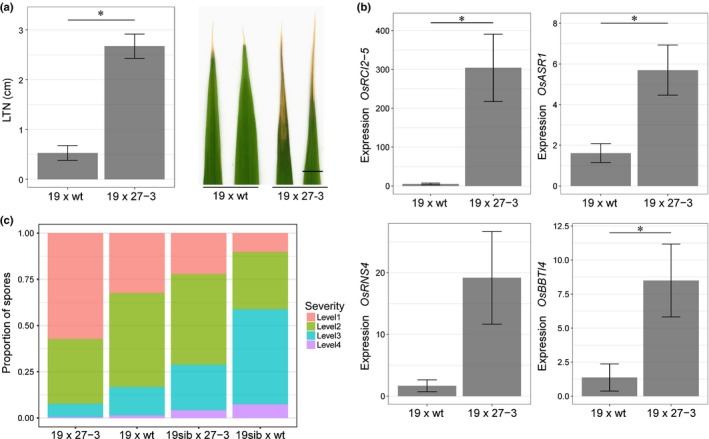Figure 5.

Expression of Lr34res in an abscisic acid (ABA)‐deficient rice background enhances the Lr34res‐mediated phenotype. (a) Leaf tip necrosis (LTN) on the penultimate leaf of 4‐wk‐old plants. Bar, 0.5 cm. n = 15–18 biological replicates; * indicates a significant difference with P < 0.001 (Student's t‐test). (b) Expression levels of the four Lr34res‐responsive core genes BBTI4, OsRCI2‐5, OsASR1, and OsRNS4. Expression levels were normalized to the ubiquitin‐conjugating enzyme UBC1, n = 4 biological replicates, mean ± SE; * indicates a significant difference at P < 0.05 (Student's t‐test). (c) Classification of biotrophic, invasive Magnaporthe oryzae growth on rice leaf sheaths 28 h after inoculation (Saitoh et al., 2012; Krattinger et al., 2016). Levels 1–4 correspond to different lengths of invasive hyphae, with level 1 being the shortest. The y‐axis shows the proportion of appressorial penetration sites that belong to the different infection levels. Six biological replicates were averaged for each cross and at least 45 penetration sites were evaluated for each replicate. A statistical analysis of the disease resistance is presented in Supporting Information Fig. S5 and Table S6.
